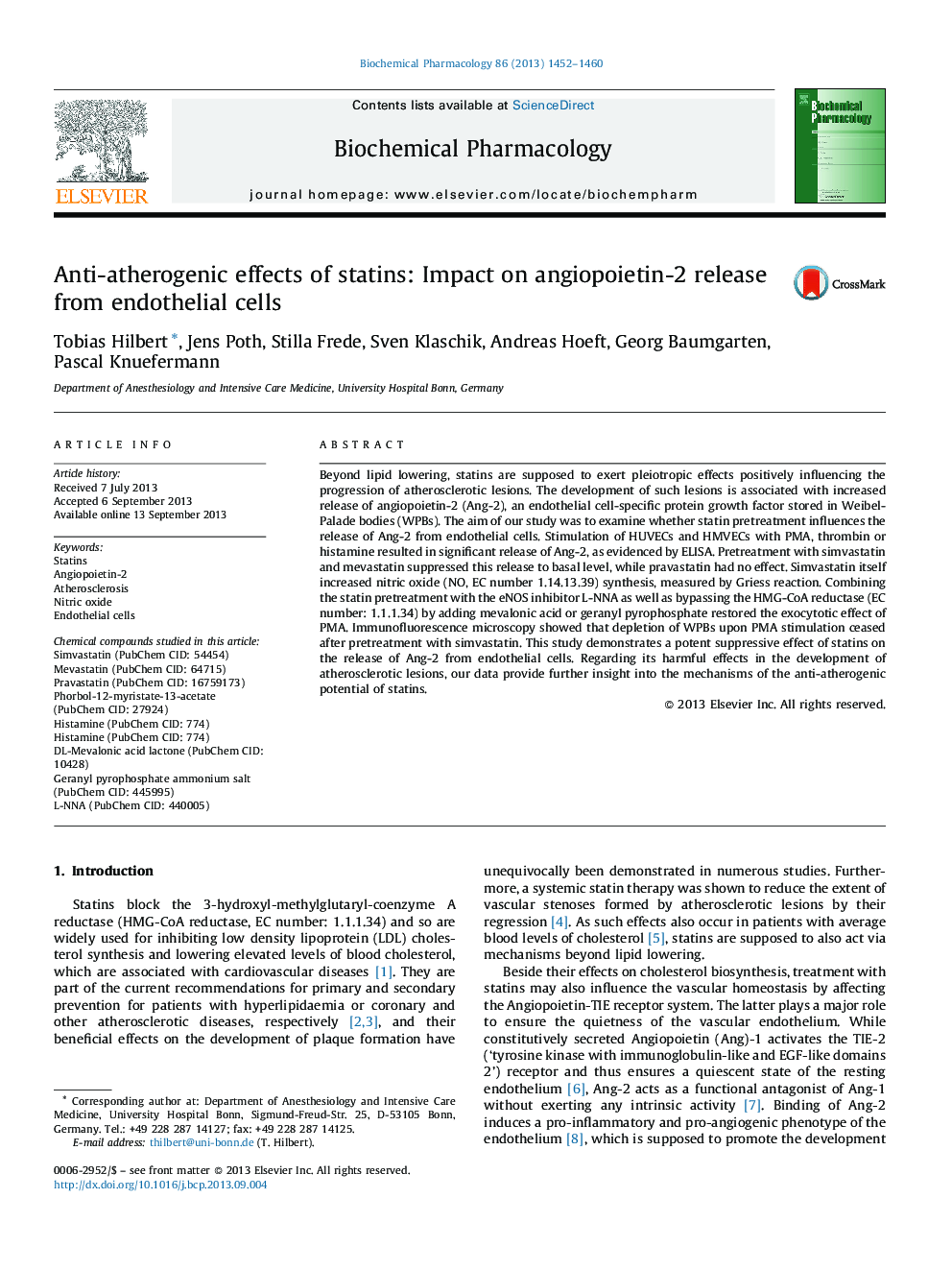| Article ID | Journal | Published Year | Pages | File Type |
|---|---|---|---|---|
| 2512345 | Biochemical Pharmacology | 2013 | 9 Pages |
Beyond lipid lowering, statins are supposed to exert pleiotropic effects positively influencing the progression of atherosclerotic lesions. The development of such lesions is associated with increased release of angiopoietin-2 (Ang-2), an endothelial cell-specific protein growth factor stored in Weibel-Palade bodies (WPBs). The aim of our study was to examine whether statin pretreatment influences the release of Ang-2 from endothelial cells. Stimulation of HUVECs and HMVECs with PMA, thrombin or histamine resulted in significant release of Ang-2, as evidenced by ELISA. Pretreatment with simvastatin and mevastatin suppressed this release to basal level, while pravastatin had no effect. Simvastatin itself increased nitric oxide (NO, EC number 1.14.13.39) synthesis, measured by Griess reaction. Combining the statin pretreatment with the eNOS inhibitor L-NNA as well as bypassing the HMG-CoA reductase (EC number: 1.1.1.34) by adding mevalonic acid or geranyl pyrophosphate restored the exocytotic effect of PMA. Immunofluorescence microscopy showed that depletion of WPBs upon PMA stimulation ceased after pretreatment with simvastatin. This study demonstrates a potent suppressive effect of statins on the release of Ang-2 from endothelial cells. Regarding its harmful effects in the development of atherosclerotic lesions, our data provide further insight into the mechanisms of the anti-atherogenic potential of statins.
Graphical abstractFigure optionsDownload full-size imageDownload as PowerPoint slide
